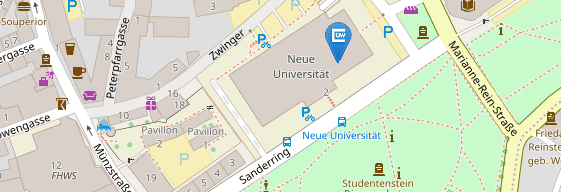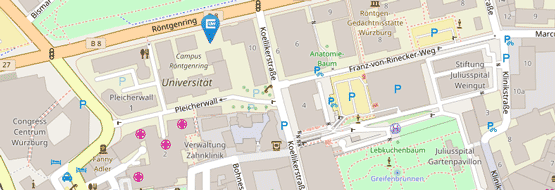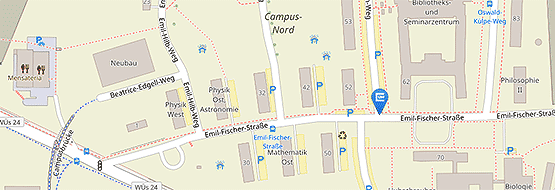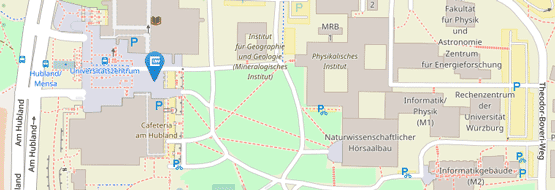Project Areas and Projects
The planned research is structured along three project areas that address the most pressing questions regarding the experience of stories in the present day:
- Immersive virtual reality
- New (Para-)Social Encounters
- Epistemic challenges
These three project areas consist of two or three projects each, yielding seven projects, each of which is headed by two PIs. Please find below details about the project areas and the suggested projects. Each project is meant to be the academic environment of three doctoral researchers; eleven doctoral researchers will start on April 1, 2026. The remaining ten spots will be filled in 2028.
By presenting multisensory simulations of the physical world, immersive virtual reality (IVR) enables people to become deeply absorbed in lifelike digital environments. Project Area 1 explores the unique effects and affordances of IVR for storytelling, emphasizing its potential to create multimodal experiences that profoundly impact narrative experience and effects. The area tackles significant research gaps in the current state-of-the-art in three subprojects: Project 1.1 investigates key processes that contribute to social understanding through immersive stories, Project 1.2 targets climate change stories and presence in VR, while Project 1.3 examines how children comprehend immersive stories. In addition to theory and research from computer science, communication science, and psychology, the projects will connect to theoretical and humanistic approaches from film studies, interactive narrative theory, and the arts.
Project 1.1: Fostering social understanding through immersive stories
PIs: Prof. Dr. Marc Erich Latoschik and Prof. Dr. Markus Appel
Stories provide the opportunity to feel for and to gain insight into the lives of marginalized groups and outgroup members. This is because stories provide a detailed description of the social world, including the plans and motivations of the protagonists, which can help recipients practice social interactions in simulated story worlds and ultimately improve their social understanding. At the same time, IVR that enables body ownership and presence is considered a potent facilitator of empathic processes (VR has been proposed to serve as an empathy machine). This project links the literature on empathy in VR to theory and research on stories and their power to increase empathy and to reduce prejudice. Empirically, the project is meant to examine the interplay of system affordances of virtual reality environments (immersion) and features of narratives as factors that predict the social understanding of participants in terms of empathy and persuasion.
Project 1.2: Climate change stories and presence in VR
PIs: Prof. Dr. Holger Schramm and Prof. Dr. Marc Erich Latoschik
The main focus of this project is to explore the use of virtual reality in experiencing interactive stories about climate change and how the sense of presence may affect the cognitive, affective, and behavioral effects on the part of the user. By manipulating different embodiments of a) the self, b) other people, and c) the degree and type of vividness and interactivity of environmental stories, we seek to influence self-presence and social presence as key mechanisms to reduce psychological distance to climate change issues and promote pro-environmental attitudes and behavioral intentions. In this way, existing research in the field of environmental communication will be expanded to include the beneficial influence of virtual embodiment, and existing research in the field of virtual embodiment will be expanded to include media psychological mechanisms of action from persuasion research, so that two subdisciplines will benefit from this project. The project also aims to derive practical recommendations from the results as to which type of embodiments should be used most effectively with which people in order to achieve behavioral changes for the benefit of the environment.
Project 1.3: Children’s immersive story comprehension
PIs: Prof. Dr. Gerhild Nieding and Prof. Dr. Marc Erich Latoschik
Stories and fictitious worlds are particularly attractive for children, and their primary media consumption often involves processing stories. While the body of knowledge on IVR effects on adults is quite extensive, research on its impact on children remains scarce despite them being a primary, but also vulnerable audience; and children’s exposure to such technologies will further increase. This project investigates how presence, embodiment, perspective-taking, and interactivity affect story comprehension in children aged five and older. These prominent effects of IVR have the potential to enhance children’s story comprehension. They will be experimentally induced through systematic variations in IVR and the outcome will be compared to traditional media such as films. While focusing on the positive potential of VR as a storytelling medium, the project will also continuously and closely monitor potential risks and threats.
Until recently, stories were mainly told as part of encounters between socially close individuals (such as families or peers), often in the form of oral storytelling, or as part of mass communication (e.g., through books, TV, or movies). Today, most theory and research on the processing of mediated stories is based on these classic media. Digital media, however, have enabled (para-)social encounters with new storytellers.
A first challenge in this regard pertains to new storytellers on social networking sites (SNS). These platforms are increasingly used for storytelling, raising questions about how social media narratives contribute to the various functions these platforms serve for their users. A second important challenge is posed by current developments in artificial intelligence (AI) and socially interactive agents (SIAs). In sum, Project Area 2 focuses on the processing and effects of stories told by new narrators brought about through new technological developments. Project 2.1 investigates how storytelling by human and artificial entities in the context of social networking sites contributes to identity processes, entertainment and parasocial phenomena, and attitude formation. Project 2.2 investigates children’s experience and understanding of stories told by social robots, alongside their psychological conception of robots.
Project 2.1: Storytelling on social networking sites
PIs: Dr. Julia Winkler and Prof. Dr. Holger Schramm
This project investigates the effects of storytelling on social networking sites (SNS). We consider functions of storytelling related to the dominant uses of social media (connecting with others, entertainment and engaging with special interests, information and opinion formation), while taking into account questions introduced by new media trends and recent advancements in digital technologies, particularly generative AI and virtual influencers. Specifically, this project investigates 1) how the stories humans share on social media contribute to social identity development, 2) how storytelling by virtual personas and AI-powered chatbots affects parasocial processes and in turn possible social functions these new storytellers might fulfill, and 3) whether storytelling by virtual personas and using generative AI can help to tackle specific problems related to a major societal challenge, climate change.
Project 2.2: Storytelling Robots for Preschool Children
PIs: Prof. Dr. Birgit Lugrin and Prof. Dr. Gerhild Nieding
In this project, social robots will be studied in their role as storytellers for preschool-aged children. Their capability to deliver stories in a multimodal and interactive manner, coupled with the ability to precisely manipulate certain elements for controlled experiments, make them an ideal research tool. To date, there is limited insight into children’s concepts regarding the storytelling abilities of social robots. This project will contain an in-depth investigation into how manipulations of multimodality (e.g., facial expressions, gaze, gestures) and interactivity (as opposed to simply receiving a story) affect various aspects, including story comprehension, narrative transportation, and the social perception of the robot, e.g., in terms of warmth and competence. Additionally, it will thoroughly examine the moderating influence of perceived anthropomorphism and media literacy. Furthermore, the project will explore whether and how a social robot storyteller can teach children moral reasoning and foster prosocial behavior through social stories.
Today, stories are frequently encountered online, such as on social media platforms. Social media platforms provide unprecedented opportunities for almost everybody to actively participate in the information society. However, easy access to information and the possibility for anyone to publish and share information without effective mechanisms of quality control also comes at a price: Alongside accurate information, social media convey inaccurate information, which may range from imprecise or incomplete information to unjustified claims and biased information all the way to outright false information.
Narrative-specific processes have received relatively little attention in research as possible explanations of the spread of misinformation and conspiracy thinking via social media. Likewise, psychological and technological solutions to counter misinformation effects have rarely capitalized on narrative-specific processes. Project Area 3 brings together theory and research on story processing with general cognitive and motivational mechanisms to derive a more complete understanding of the epistemic challenges associated with digital storytelling. One pillar of Project Area 3 is experimental research directed at identifying conditions and psychological processes that govern the effect of misinformation and conspiratorial content communicated via digital stories. A second pillar is the research-based development and empirical evaluation of psychological and technological interventions that can counter and alleviate these epistemic challenges.
Project 3.1: Examining psychological mechanisms underlying misinformation through social media narratives
PIs: Prof. Dr. Tobias Richter and Prof. Dr. Birgit Lugrin
Misinformation on social media is often communicated in the form of stories. Theory and research on the persuasive effects of stories and on learning false information from stories suggests that features of the narrative format and how it is processed by recipients contribute to the spread of misinformation. Extant research on the psychological mechanisms that underlie misinformation effects on the internet and how they can be prevented or corrected has largely ignored the likely contributions of the narrative format. In Project 3.1, we aim at filling this gap by investigating how digital narratives facilitate the acceptance of misinformation and the underlying cognitive mechanisms. We will also examine how misinformation through narratives can be countered with appropriate technological solutions that disrupt persuasive processes and how recipients can be armed against misinformation in digital narratives through suitable psycho-educational interventions.
Project 3.2: A narrative perspective on meaning and conspiracy theories online
PIs: Prof. Dr Markus Appel and Prof. Dr. Tobias Richter
Post-truth communication more generally and conspiracy theories more specifically are problematic aspects of today’s digital societies and pose a danger to democratic functioning. Eminent challenges to humankind such as climate change, the COVID-19 pandemic, or the war in Ukraine provide threats to many individuals’ meaning systems. In the wake of these challenges and against the background of a widespread use of social media platforms, conspiracy theories have proliferated. We re-construct conspiracy theories as closely linked to the narrative format, including several narrative elements such as groups of antagonists, conflicts, and (malevolent) actions. Thus, the term conspiracy narrative is sometimes used synonymously with that of conspiracy theory. Despite their overlap, however, the fields of story processing and conspiracy theories remain to be connected. For too long, both thriving fields of theory and research have evolved separately. Project 3.2 is meant to address this research lacuna.






